
The macaques constitute a genus (Macaca) of gregarious Old World monkeys of the subfamily Cercopithecinae. The 23 species of macaques inhabit ranges throughout Asia, North Africa, and Europe. Macaques are principally frugivorous, although their diet also includes seeds, leaves, flowers, and tree bark. Some species such as the long-tailed macaque will supplement their diets with small amounts of meat from shellfish, insects, and small mammals. On average, a southern pig-tailed macaque in Malaysia eats about 70 large rats each year. All macaque social groups are arranged around dominant matriarchs.

Lactuca, commonly known as lettuce, is a genus of flowering plants in the family Asteraceae. The genus includes at least 50 species, distributed worldwide, but mainly in temperate Eurasia.

The conservation status of a group of organisms indicates whether the group still exists and how likely the group is to become extinct in the near future. Many factors are taken into account when assessing conservation status: not simply the number of individuals remaining, but the overall increase or decrease in the population over time, breeding success rates, and known threats. Various systems of conservation status are in use at international, multi-country, national and local levels, as well as for consumer use such as sustainable seafood advisory lists and certification. The two international systems are by the International Union for Conservation of Nature (IUCN) and The Convention on International Trade in Endangered Species of Wild Fauna and Flora (CITES).

Mentha longifolia, also known as horse mint, brookmint, fillymint or St. John's horsemint, is a species of plant in the family Lamiaceae. It is native to Europe excluding Britain and Ireland, western and central Asia, and northern and southern Africa.
Bauhinia seleriana is a species of plant in the family Fabaceae. It is found from central and southern Mexico to Honduras.
Begonia cavaleriei is a species of plant in the family Begoniaceae. It is endemic to China. It grows on limestone rocks.
Begonia hainanensis is a species of plant in the family Begoniaceae. It is endemic to China. It grows in forests and on mossy rocks.
Begonia peltatifolia is a species of plant in the family Begoniaceae. It is endemic to China. It grows on limestone rocks and broad-leaved forests.
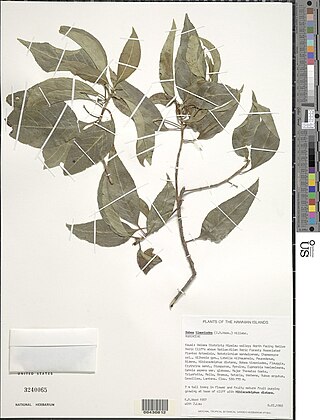
ʻAhakea is a species of flowering tree in the coffee family, Rubiaceae, that is endemic to Hawaiʻi. It inhabits dry, coastal mesic and mixed mesic forests at elevations of 250–580 metres (820–1,900 ft) on the islands of Hawaiʻi and Maui. It is threatened by habitat loss.
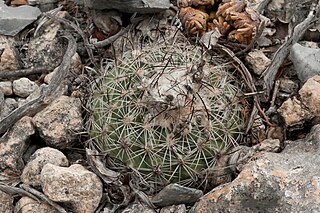
Turbinicarpus saueri is a species of plant in the family Cactaceae.
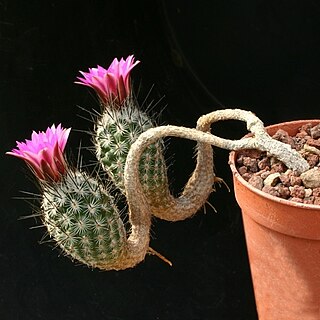
Rapicactus subterraneus, synonym Turbinicarpus subterraneus, is a species of plant in the family Cactaceae. It is endemic to Mexico. Its natural habitat is hot deserts.
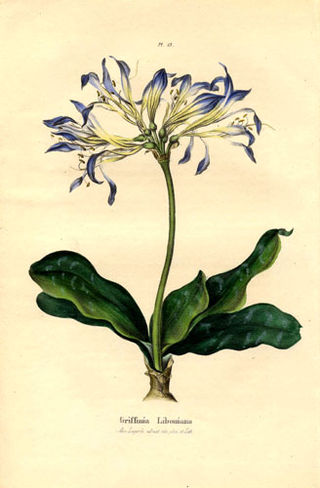
Griffinia is a genus of Brazilian plants in the Amaryllis family, subfamily Amaryllidoideae. It includes 23 known species which are endemic to Brazil. The most closely related genus to it is the monotypic Worsleya.
Lactuca cypria, the Cyprus lettuce, is a biennial, erect herb with glandular, hairy stems and a globose rhizome. Leaves alternate, simple, the basal large, oblong, petiolate, 10-15 x 5–7 cm, pinnatisect with a suborbicular terminal lobe, the upper smaller, often with a profound purple colour at the lower surface. Flowers in heads, capitula in corymbs, florets pale yellow, all ligulate, flowers April–July, fruit a pappose achene.
Lactuca watsoniana, locally known as alfacinha, is a species of wild lettuce endemic to the Azores. An endangered species, there are fewer than 2000 individuals remaining in the wild. DNA evidence shows that it is closely related to the North American species of Lactuca, while the Canary Islands endemic Lactuca palmensis is more closely related to African and European Lactuca lineage.
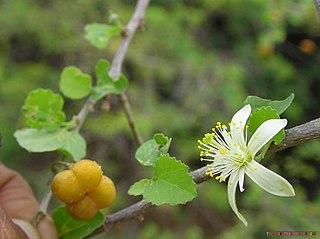
Grewia tenax, called the phalsa cherry, white crossberry, raisin bush, gangara, gangu, or kanger, is a species of flowering plant in the family Malvaceae. It is native to Africa, from the Sahara to Tanzania and parts of southern Africa, the Arabian Peninsula, and on to the Indian Subcontinent. The ripe fruit is edible and is consumed by local peoples either fresh, dried, or powered in drinks.
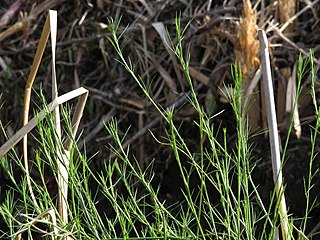
Psoralea fascicularis, the large-stipule fountainbush, is a species in the pea or Fabaceae family. It is endemic to the Western Cape province of South Africa where it has been red listed as endangered (EN) by the International Union for Conservation of Nature (IUCN) Red List of Threatened Species due to its declining population.
Isoetes olympica, the Olympic quillwort, is a lycophyte in the family Isoetaceae. The IUCN has classified the species as critically endangered. It was named by Alexander Braun in 1867.
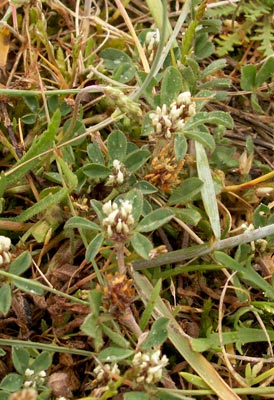
Trifolium scabrum, the rough clover, is a species of annual herb in the family Fabaceae. They have a self-supporting growth form and compound, broad leaves. Individuals can grow to 0.12 m.

Primula stricta, also known as the strict primrose, is a species of flowering plant in the family Primulaceae.













